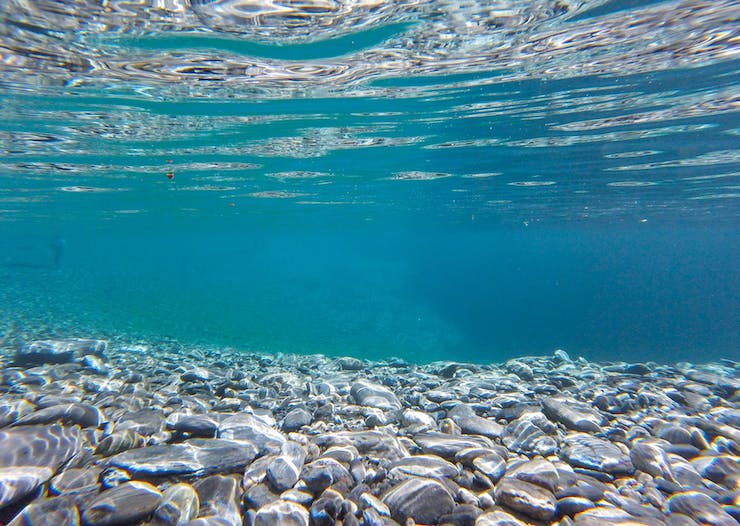
Our world’s oceans and great lakes are becoming overrun by plastic waste. Research has shown that anywhere from 4.7 to 12.8 million metric tons of plastics are floating across the surface of the oceans. This only accounts for 1% of the plastic debris that has been able to be measured polluting our water. A study done by the World Economic Forum estimates that another 1% of plastic debris in the oceans comes from microplastics, around 93,000 to 236,000 metric tons of pollutants. While organizations are racing to clean up large plastic debris, it is the microplastics that seem to be creating a larger problem.
Microplastics are only about the size of a sesame seed. They come from larger pieces of plastics that have broken down or from the mass production of microbeads used in cosmetics like hand sanitizers and body exfoliants. These microplastics and beads then sink to the ocean floor or wash up on beaches. Birds, fish, and other aquatic creatures mistake these sunken plastic beads as food. Once a fish eats this, the toxin gets spread up the food chain as it is eaten by another creature. It is creating an imbalance in the ocean’s natural food chain. It also effects the health of the food we humans consume as well.
In 2015 President Obama signed the Microbead Free Waters Act banning the continued use of microbeads in cosmetic products. This was step one in combating the issue. Step two is finding a way to remove the waste from our waters. Finding where clusters of microplastics are is so hard because they are so hard to see on the seabed, unlike large plastic debris that floats on the surface. However, a 12 year old girl from Andover, MA has designed a drone that could possibly solve this problem.
Anna Du is currently a 7th grade student at the Andover School of Montessori who loves engineering and the ocean. Anna said that one day her class was “watching a video about how plastics were affecting the environment and I was really horrified because I also love animals, so I wanted to do something to try and help solve that problem and save the world.” After watching that presentation she went to the Boston Harbor where she “noticed there was a lot of plastics on the sand, I tried picking some up, but there seemed to be so many more, and it just seemed impossible to clean it all up.” Anna knew there had to be a way to engineer a solution.
Since the age of five Anna has been attending Saturday morning programs at MIT where she was encouraged to experiment with engineering projects. Finally, she had a project to bring to her Saturday workshops that truly meant something to her. She was determined to build something that could be used to help clean the microplastic she saw firsthand at the Boston Harbor. Scientists have already been using infrared light to locate microplastics in the Arctic Ocean. The chemical bonds in plastics are good at absorbing infrared light, so it has become a wide used method of locating plastics. The next thing Anna had to do was create a tool that would enable her infrared light to map the floor of the Boston Harbor. She custom designed a remote controlled submersible drone. But because she is only in middle school and doesn’t have funding from some government agency, Anna Had to make her ROV out of cost efficient materials. She also had to design her own infrared camera system as a professional one would have been to expensive. Anna began building her ROV at MIT in 2017. She said, “I’ve had some tips from my mentors, but I’ve mostly been building it by myself.”
Anna hopes that the data she is able to collect with her drone will be able to make a change in the world. She hopes to one day be a full time student at MIT where she will be able to eventually engineer tools that will further help save the world with proper funding. With the completion of her ROV Anna was accepted into 3M’s Young Scientist Lab. At 3M she will be mentored by professionals to better prepare her system for a larger scale operation. Anna’s first goal there is to go from using a remote controlled to fully autonomous drone. Anna went on to say, “I’m not too sure what I want to do in life, I just know I want to build stuff. Maybe I’ll be an environmental engineer so I can help save the world.” After all, she is only 12 years old. But, at the rate she is going it is quite likely that Anna will be someone who helps shape the course of our world.
|